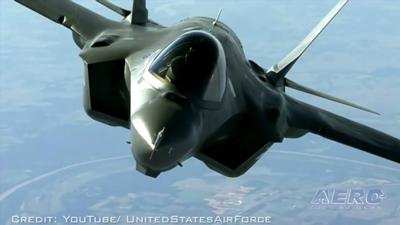Wed, Aug 17, 2022
Faulty Ejection Seats Inspected and Repaired
Lockheed’s F-35 Lightning II is a tour de force of aerospace technology and good-old, American-ish know-how. The F-35 is the first aircraft since Douglas’s mighty F-4 Phantom to be used concomitantly by the United States’ Air Force, Navy, and Marines.

What’s more, the F-35 program—through which the USAF ultimately plans to provision itself with 3,300 of the stealthy, fifth-generation, multi-role warplanes—is the most expensive military undertaking in the history of the world.
All told—and adjusted for 78-years of regular inflation and two-years of high-octane, Biden inflation—the F-35 program stands to cost contemporary Americans a little more than one-quarter of what it cost their forebears to wage the whole of the Second World War.
Yet for all their magnificent technology and breathtaking cost, the majority of the U.S. military’s Lightning IIs were grounded for nearly three-weeks when a defect was discovered in a critical component of the British-built, Martin-Baker US16T ejection seats by which F-35 pilots occasionally make unscheduled, high-speed/low-enjoyment egresses from their aircraft.

The potentially defective component was identified by Martin-Baker as a cartridge-actuated device (CAD)—a gadget that occasions a series of automatic functions when a pilot initiates egress from an imperiled aircraft. CADs alternately propel ejection-seat-assemblies from their host-aircraft, and deploy the parachutes that preclude ejection being a futile exercise.During the F-35 grounding, Air Force personnel used validated radiography procedures to scan 706 CADs removed from 349 F-35s. Four of the devices were determined defective and replaced.
Martin-Baker head of business development Steve Roberts stated the CAD anomaly had been discovered in April 2022 in an F-35 assigned to Utah’ Hill Air Force Base. Mr. Roberts further stated that the defect was traced back to a “… gap in the manufacturing process, which was addressed and changed.”
The affected F-35s have been returned to service.
More News
He Attempted To Restart The Engine Three Times. On The Third Restart Attempt, He Noticed That Flames Were Coming Out From The Right Wing Near The Fuel Cap Analysis: The pilot repor>[...]
Make Sure You NEVER Miss A New Story From Aero-News Network Do you ever feel like you never see posts from a certain person or page on Facebook or Instagram? Here’s how you c>[...]
From 2009 (YouTube Edition): Leading Air Show Performers Give Their Best Advice for Newcomers On December 6th through December 9th, the Paris Las Vegas Hotel hosted over 1,500 air >[...]
Aero Linx: NASA ASRS ASRS captures confidential reports, analyzes the resulting aviation safety data, and disseminates vital information to the aviation community. The ASRS is an i>[...]
“For our inaugural Pylon Racing Seminar in Roswell, we were thrilled to certify 60 pilots across our six closed-course pylon race classes. Not only did this year’s PRS >[...]
 NTSB Final Report: Rutan Long-EZ
NTSB Final Report: Rutan Long-EZ ANN FAQ: Turn On Post Notifications
ANN FAQ: Turn On Post Notifications Classic Aero-TV: ICAS Perspectives - Advice for New Air Show Performers
Classic Aero-TV: ICAS Perspectives - Advice for New Air Show Performers ANN's Daily Aero-Linx (06.28.25)
ANN's Daily Aero-Linx (06.28.25) Aero-News: Quote of the Day (06.28.25)
Aero-News: Quote of the Day (06.28.25)




